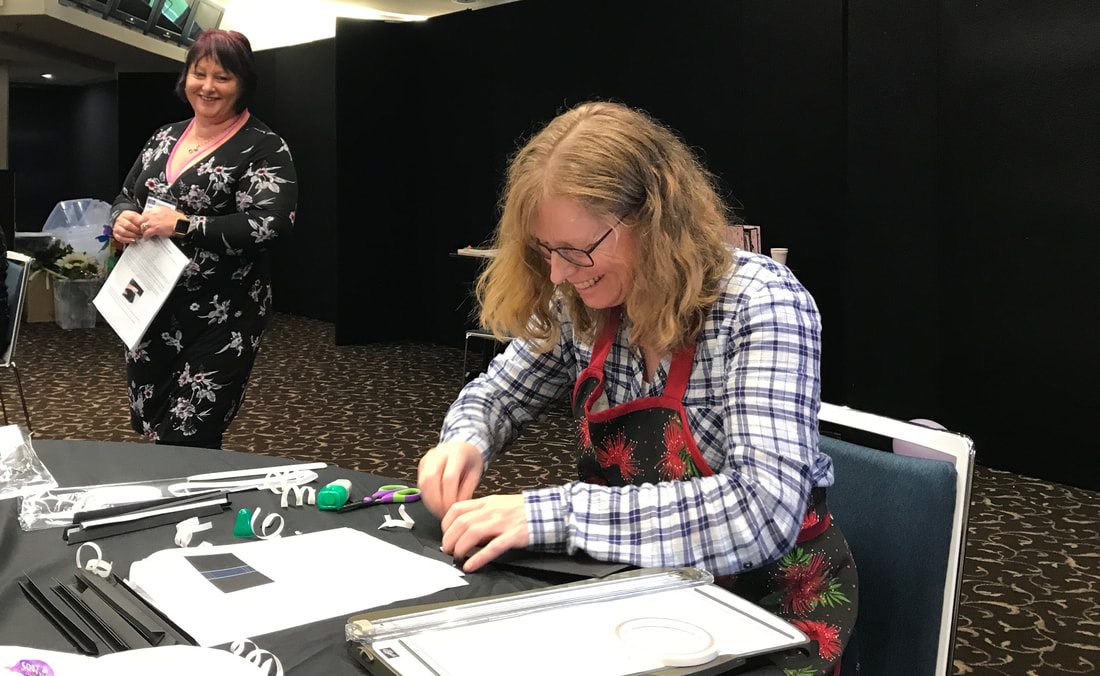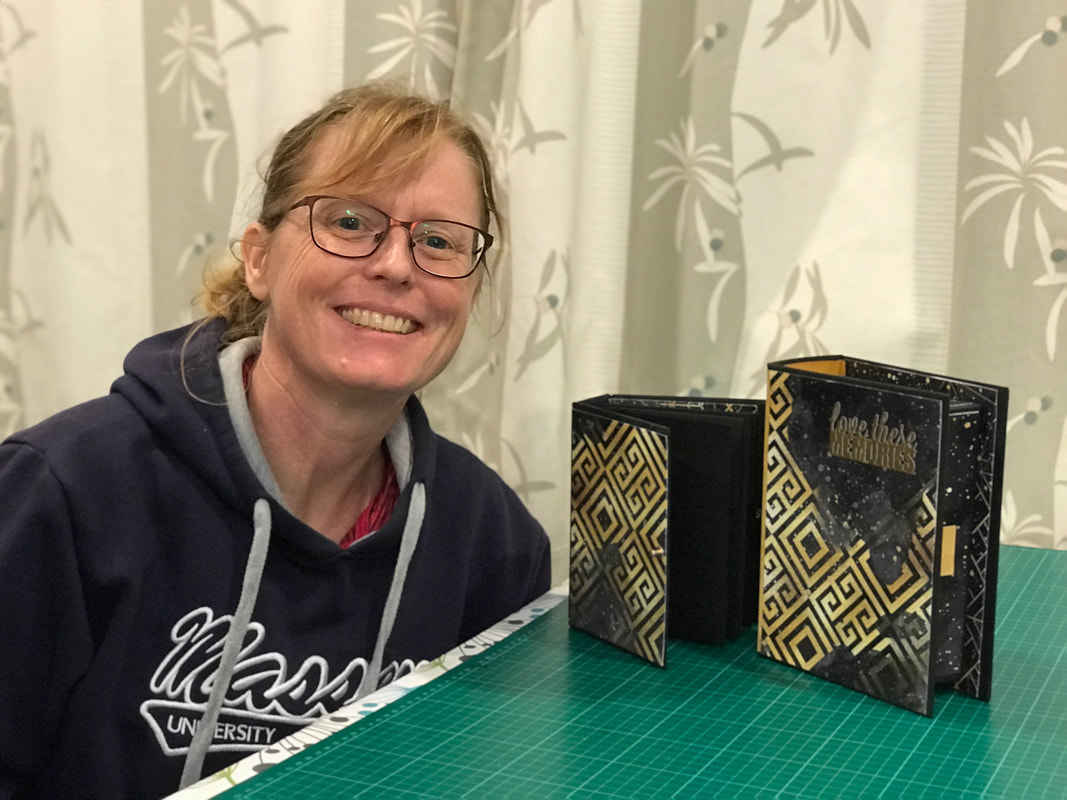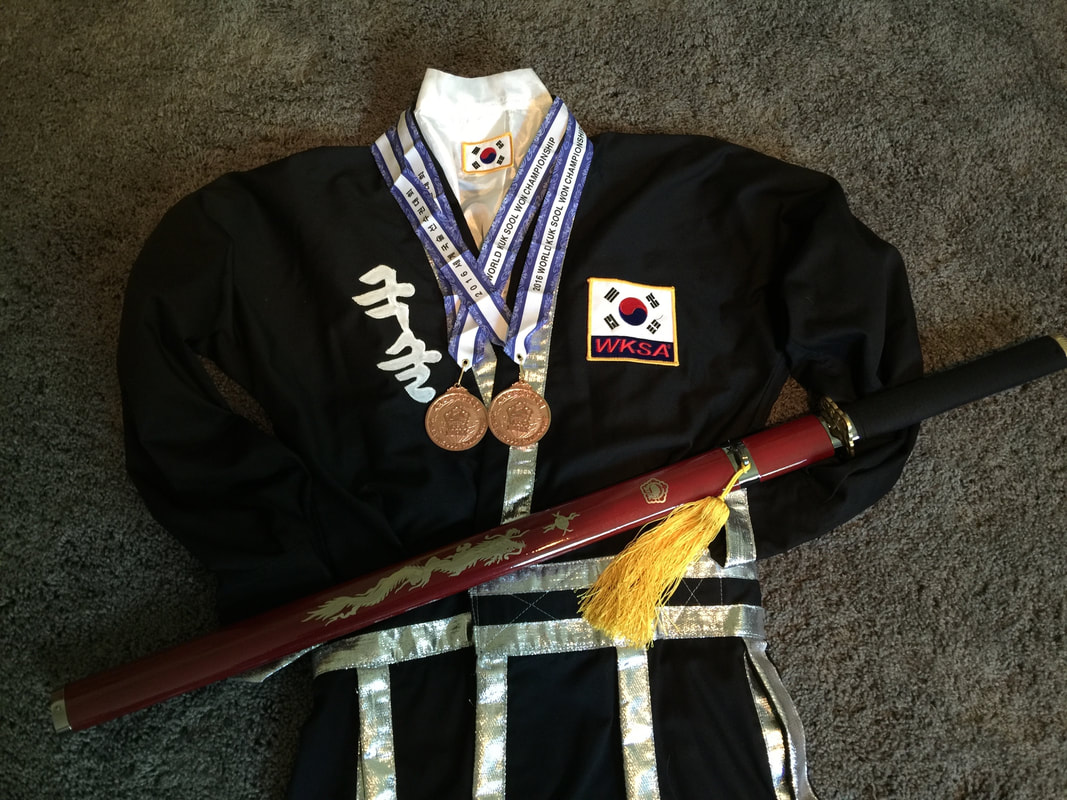|
We have returned to training after our two week winter break. These training breaks give us an important opportunity to rest our bodies and minds, catch up on jobs at home, and spend time with our families and friends. For me, this break has also reminded me about the importance of balance in my life and trying new things.
As a school owner and avid Kuk Sool Won™ martial artist, I am very focused on my teaching and training. It is easy for it to become all consuming. When I am teaching and training I think of nothing else. It is a very mindful experience. At other times, I am working with SBN Caroline on the planning, administration and marketing for our schools. I also spend much of my spare time thinking about my training. I go through my techniques and forms in my head. It is a form of meditation for me and keeps me focused and my memory sharp. During these school holidays, I have devoted quite a bit of time to Kuk Sool admin. However, I also spent a few days at a craft expo. For three days, I participated in several different paper craft workshops. I made four different types of mini-journals using craft papers, cardstock and embellishments. I got my hands dirty with mixed media projects using acrylics and inks. I also made paper, velum and foam flowers. As a novice crafter, I found these workshops intense. I had to learn how to use different types of materials, follow instructions that I often didn’t understand, develop new skills, and cope with making mistakes. While it was often challenging, it was also incredibly rewarding. I not only learnt a lot, I also got to make some really neat journals which I can fill with photos and memories. So why is this crafting experience relevant to my martial arts training? There are three main reasons.
JKN Jane Hurst First degree black belt and school owner Kuk Sool Won™ of Pukekohe and Onewhero Copyright © 2018. Kuk Sool Won™ of Onewhero. All Rights Reserved.
0 Comments
It’s the winter school holidays in New Zealand and we have closed our martial arts school for two weeks. Unlike many schools in other countries, we always take a break from training during the school holidays. It’s good for us and for our students for three important reasons.
Instructors need a break from time to time as well. Teaching is mentally and physically draining. A huge amount of energy is required to keep classes enjoyable and to ensure everyone is learning. Like teachers and university lecturers, martial arts instructors need time away from the dojang to recharge their energy levels. This enables us to teach classes with our full attention and energy, to ensure it is the best experience possible for our students. Taking a short training break does not mean we do nothing. It is important to rest and relax physically and mentally, but it is also equally important to keep our bodies moving. We encourage our students to keep physically active by doing something different and enjoyable. This might involve walking, swimming or cycling for example, as part of a holiday activity. And don’t forget to plan some social time with your family and friends. Enjoy your training holiday. JKN Jane Hurst First degree black belt and school owner Kuk Sool Won™ of Onewhero Copyright © 2018. Kuk Sool Won™ of Onewhero. All Rights Reserved.
In my recent blogs I have been exploring the concept of mindfulness as it relates to the practice of martial arts and personal safety. Mindfulness, in essence, involves fully paying attention to the present moment, without judging or reacting to it. Living mindfully is good for our health and wellbeing. It enables us to gain control over our attention, attitude, and actions. This means we can break the cycle of worry and negative self-talk, focus on and live fully in the present moment, and act in ways that are well thought through and beneficial to us. This makes us feel happier and our life richer and more meaningful.
Mindfulness is not easy to achieve and does not come naturally to most of us. Our minds get flooded with thoughts and judgments, we get distracted, and we often try juggling too many things at once. We rarely completely focus our full awareness on each present moment, without any form of judgment. Mindfulness therefore, is something we need to practice. Mindfulness can be practised at anytime, anywhere, and while undertaking any activity. This includes mindful movement, such as martial arts. Here are five exercises you can use to bring mindfulness into your regular martial arts practice. 1. Mindfully warming up: Observe your body when you are doing your warm up. Really focus your attention and awareness on each part of your body. This includes noticing for example, the sensations in your muscles as you are stretching them. For example, are they tense, relaxed, sore, or tight? Notice your thoughts and gently let go of any judgments, such as, “I am not flexible enough” or “I’m in pain and will really struggle tonight”. If you find your mind drifting off, gently bring it back to observing your body. 2. Observe your breathing: Focus your awareness on the air flowing in and then flowing out. This involves observing the movement of your lungs, chest and belly, the sensations in your nostrils, and the pauses in between the in and out breaths. Observe your breath not only when stationary, but also when you are moving, such as during your kicks, techniques and martial arts forms. Experiment with lengthening your in and out breath. When doing a kihap (kiai or martial arts yell), observe the sensation of the air being forced out of your lungs. 3. Move mindfully: When undertaking a specific martial arts movement, such as a kick, follow the sensations in your body as you move. For example, when doing a roundhouse kick, focus on the sensations in your body when you are in your martial arts stance. Observe each change in movement as you prepare for and execute the kick. Focus on the sensations in your muscles and joints when for example, lift your leg to chamber, you pivot on the ball of your base foot, you extend your leg to kick, and when you return back to your stance. Slow each movement down and really focus on the sensations in your body. 4. Observe your thoughts: When doing a series of martial arts movements, such as hyung or forms in Kuk Sool Won™ (patterns in Taekwondo or kata in karate), we often have a mixture of thoughts in our head. Some of these can be quite negative, such as “I can never remember”, or “I’m never going to be good enough”, or “I can’t get low enough in my stances”. Sometimes we are on autopilot, with no conscious thoughts in our minds or with our thoughts distracted by something else. Even positive thoughts can detract from being fully present in our bodies. To achieve a better balance between our thoughts and movements, we first need to become aware of our thinking. We do this by observing our thoughts, without judging them or trying to control them. This exercise enables us to become aware of how our thoughts intrude on and distract us from fully experiencing each present moment. 5. Participate with awareness: Once we become aware of our thoughts, we can then begin to gently let go of those which are negative or distracting. If we pay full attention to what we are doing in each moment and let go of everything else, we are participating fully in that moment. Once you have practised observing your thoughts, try to do your forms while letting go of all those thoughts and judgments that are distracting or negative. As they come into your head, notice them and then gently let them go rather than fixate on them. Refocus on each movement. While it is not easy, over time it will come more naturally to you. It will add to your ability to improve your form and make your training much more enjoyable. Mindfulness is something which needs to be practised. Try these exercises for several weeks and observe how they affect your training. You can also try finding other ways to incorporate these types of mindfulness skills into your other martial arts activities (such as breakfalls and technique training), and then into other aspects of your daily life. This will not only improve your martial arts training, but also act as a great stress reliever. JKN Jane Hurst First degree black belt and school owner Kuk Sool Won™ of Onewhero Copyright © 2018. Kuk Sool Won™ of Onewhero. All Rights Reserved. |
Caroline and Jane Hurst
Caroline is a 5th degree black belt and Jane is a 2nd degree black belt in the traditional Korean martial art of Kuk Sool Won™ . They run 2 Kuk Sool Won™ martial arts schools in New Zealand. Archives
March 2019
Categories
All
|





